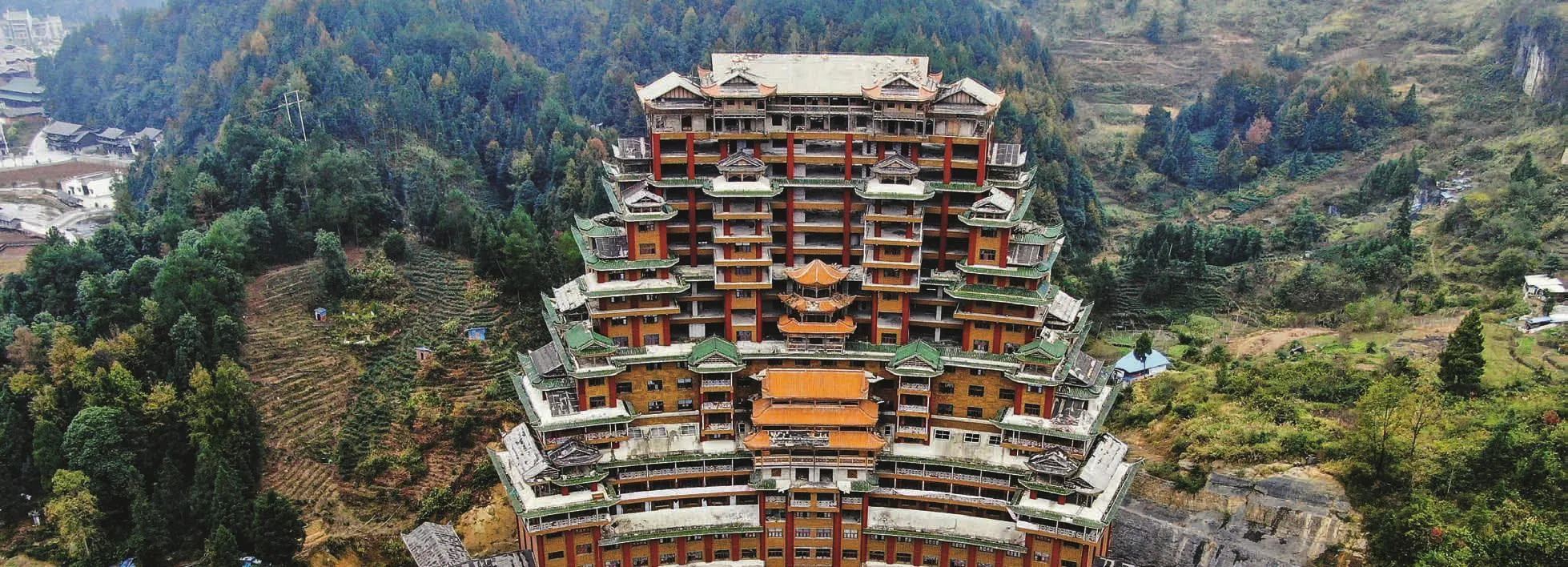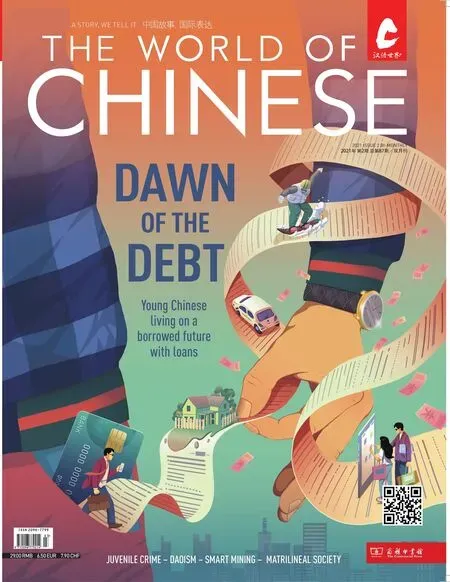DEBT IN THE WATER
Local governments are taking out loans to fuel construction sprees in China’s countryside
There is little remarkable about Dushan, a county in Guizhou province deemed by the government as“impoverished” until March 2020.Surrounded by lush countryside and tall mountain peaks, Dushan’s urban areas are a largely uninspiring mix of tower blocks and run-down apartments.
But an explosive documentary has revealed remarkable structures among the mundane concrete buildings: an ornate ten-story pagoda, a sprawling Forbidden Citylike museum complex, a lofty bell tower that mimics London’s Big Ben,and an astonishing ethnic-themed hotel resort covering 5,900 square meters in the mountains, all standing abandoned and unfinished.
Dushan paid for these lavish vanity projects through a massive government debt-funded spending spree.The country only had revenues of just over 1 billion RMB in 2018,but racked up unpaid loans that totaled 40 billion at their worst.“With all this debt, the county could have easily built boats and infrastructure and boosted industries,” one user commented on Weibo after the news broke out in 2020.
Dushan is not alone in this sea of debt.In August 2020, media reported on an extravagant new school campus (with waterfalls and a fake rockery) built in the rural county of Zhen’an, Shaanxi province, at a cost of 700 million RMB.In Jingzhou, a massive statue of the hero Guan Yu cost 1.5 billion RMB to build in 2016.China’s total debt-to-GDP ratio—including government, corporate,and household debt—is now comparable to the US, having hit 270 percent at the end of 2020 (up from 246 percent the previous year).
Government debt was 29.95 trillion RMB at the end of 2017, but there may be an additional 40 trillion RMB in local government debt that is “hidden” off balance sheets:money that is raised through local government financing vehicles,which borrow money from banks in order to issue bonds to raise funds.
This rampant spending funded by debt threatens local government finances and the sustainability of China’s economic development.The country is dotted with empty homes(around 12 million in 2016), unfinished hotels, and idle tourist attractions.If unsold, these will not pay off the debts owed by local governments,potentially sowing the seeds of a financial crisis.A 2018 report from the International Monetary Fund stated that “China’s credit boom is one of the largest and longest in history.Historical precedents of ‘safe’ credit booms of such magnitude and speed are few and far from comforting.”
The central government has tried to clamp down on excessive borrowing,while maintaining growth.Local governments were permitted to issue their own bonds in 2014 to give them regulated access to finance.
But with growth slowing and consumption levels relatively stagnant, it remains to be seen whether China can pay back its debt.As Covid-19 brought the economy to a halt in early 2020, the central government launched a stimulus package totaling 3.6 trillion RMB.With the economy now growing slower than in decades past, it’s likely there are going to be more Dushans.


